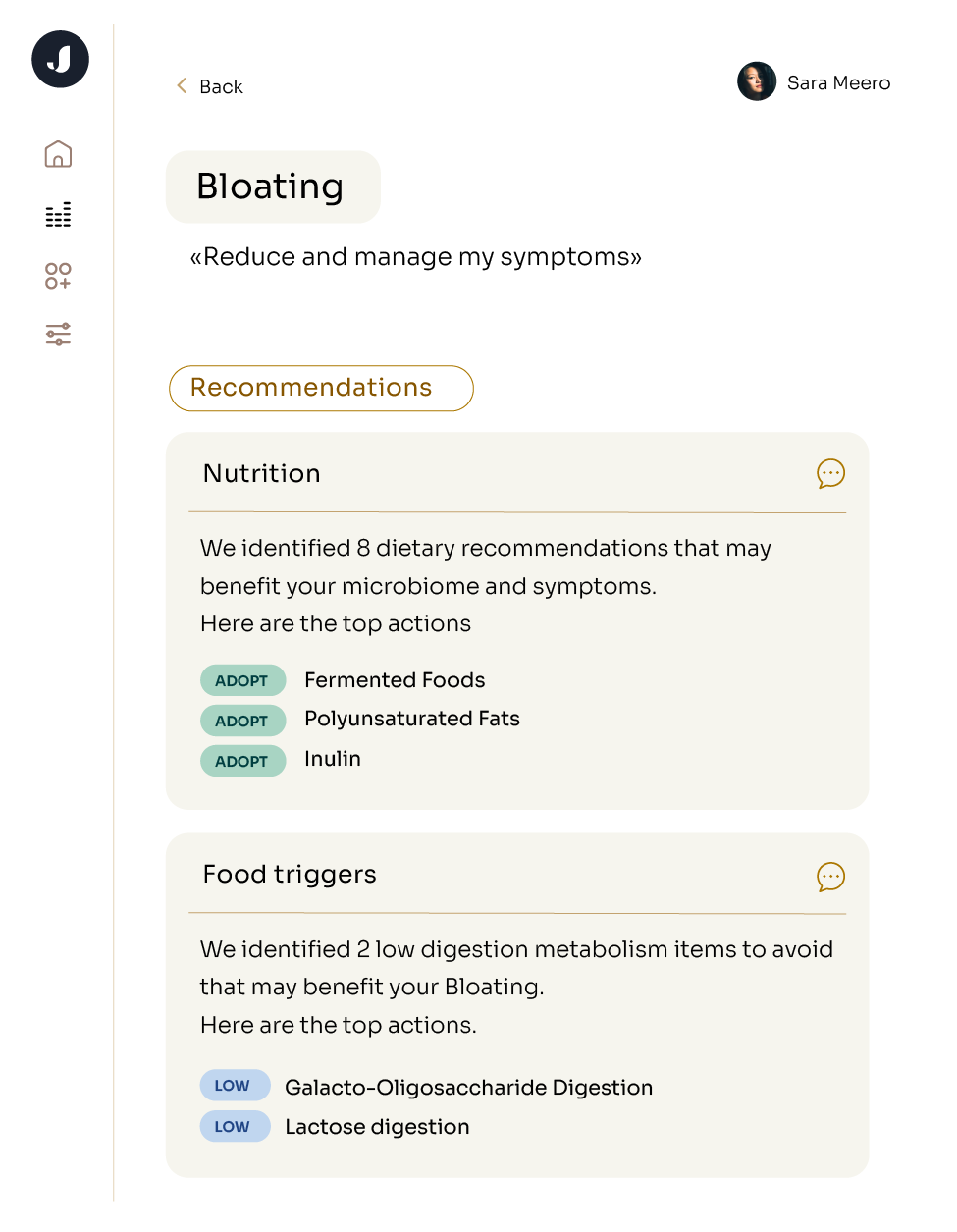This link between physical performance and the gut can be viewed sort of like a funnel. At the top, we have exercise and physical activity, following, we have Gastrointestinal factors and influence and at the bottom we have the gut microbiome.
Starting from the top, physical performance refers to whole body function that encompasses both muscle and nervous system function. Physical performance also deals with optimal energy expenditure, which is then broken down into respiration, circulation and digestion. A common symptom observed during physical activity is inflammation, which on a small scale is one's body trying to recover from a workout but, if prevalent, inflammation can actually become a recovery issue and diminish performance abilities.
Further down the funnel, GI symptoms are common in athletes and can be influenced by exercise. The gut is an important athletic organ because it's responsible for the delivery of water and nutrients during exercise. Researchers have claimed that you can “train your gut”, meaning that the individual gut can be conditioned in order to reduce gastrointestinal stress and in turn improve physical performance.
At the microbial level, trillions of microbes reside in the GI tract and are involved in many metabolic processes, including the production of metabolites. Intestinal microbiota also stimulate the maturation of the immune system, which allows for it to better recognize different types of bacteria and protect against potentially pathogenic microbes. A diverse gut is associated with better immune function, due in-part to the higher amount of short-chain-fatty-acid (SCFA) producers. By producing short-chain fatty acids (SCFAs) like acetate, propionate and butyrate, gut microbes such as Lachnospiraceae support intestinal barrier integrity, modulate the immune system, optimize energy metabolism and reduce local and systemic inflammation. Acetate is metabolized in muscle tissue as an energy source, while butyrate is used for energy in the epithelial cells of the colon.
Lactate is produced by the skeletal muscles during anaerobic exercise, can enter the gut lumen via circulation and act as a resource for lactate-utilizing species in the gut. In other words, physical performance alone can autonomously provide fuel for our gut. These lactate utilizing microbes produce metabolites that can act as signaling molecules for other physiological processes.
Surprisingly, a key trigger of Lower Back Pain, an incidence that is the foremost cause of disability affecting day to day life, is linked to the gut microbiome. Back discomfort usually deals with issues of the intervertebral disc (IVD). Interestingly, in traditional practices it has been thought that the IVD, along with the eye and central nervous system (CNS) are protected from the body's uncontrolled inflammatory response. However, thanks to 16s and metagenomic shotgun sequencing, microbes have been found in these areas. In our normal IVD, our short-chain fatty acid producers Firmicutes and Actinobacteria were found in abundance.
In the incidence of back pain, specifically lower back pain, researchers hypothesize a break in the blood-disc barrier that allows for bacterial translocation, which can lead to the increased production of metabolites that can lead to inflammation and compromised immunity. Jona’s technology can inform you of the presence of certain bacteria that have been linked to worsened severity of your individual back pain by increasing inflammation. By utilizing the actionable insights provided in the action plan, steps can be taken. For example the literature tells us that administration of certain probiotics has been known to transform the IVD environment from pro-inflammatory to anti-inflammatory.
With around 10%-20% of the population, insomnia is the second most mental health issue after anxiety disorder. As we consider our recent discussions surrounding mental health after our recognition of Mental Health Awareness Week last week, we can better understand the role the microbiome has on these issues, as depression and insomnia actually frequently occur together. The link between insomnia and the gut-microbiome is the gut-brain axis, because sleep is closely related to circadian activity. Phyla, such as Bacteroidetes, and Firmicutes, actually show cyclical changes in abundance from day to night. These organisms are known to be related to not only rhythmic food intake, but also dietary structure, gender and biological clock of the host. Insomnia can actually alter gut composition due to stress signals being sent to the brain. The brain's metabolic response includes increased gut permeability and decreased barrier function. Jona provides the information to employ unique individual-based actions rooted in the prevention and reversal of such dysfunctions, by understanding your microbiome environment on a specific level.









